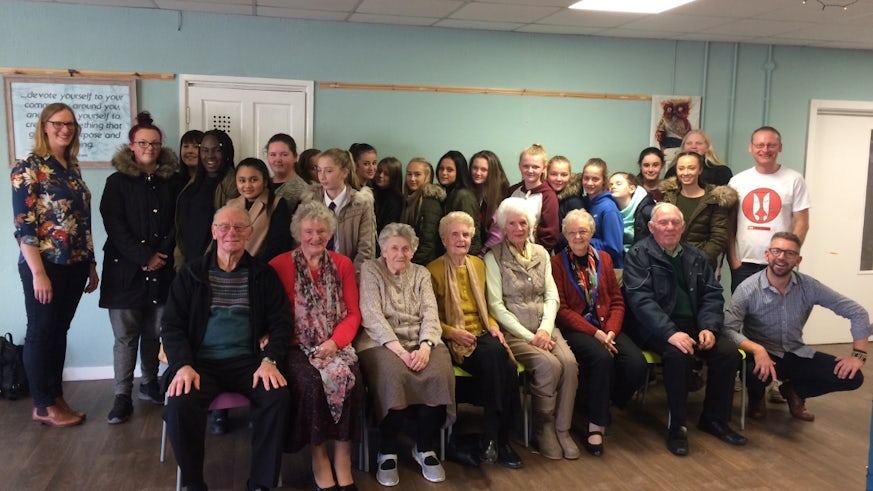Our World War – Cardiff suburb reclaims lost heritage
13 September 2017

Community-led research project reveals homes fit for heroes and the lasting effects of the First World War on a corner of Wales
A University-led community project has shed light on the remarkable but hidden heritage of a Cardiff suburb, to tell the story of the area’s history from the First World War through to the legacy of the Homes for Heroes built in its aftermath.
The community of Caerau and Ely, home to 25,000 people and one of the nation’s largest social housing estates, has uncovered their own fascinating history through the Dusty’s First World War Project, supported by Cardiff University historians.
Like districts across the UK, Cardiff suffered significant losses during the terrible four years of the Great War. To help reward the population for its wartime contribution, Lloyd George pledged in the1918 General Election campaign to build Homes Fit for Heroes. In south Wales, the district of Ely was transformed from a quiet, predominantly rural community into a bustling urban suburb, designed on Garden Village principles.
The focus of this community led research project was the Dusty Forge, a local building and landmark since well before the First World War and former location of a coaching house and inn. Today Dusty Forge is a bustling community hub, home to project partners Action for Caerau and Ely.
The Dusty's First World War brought together local people from across the generations, including 30 school pupils from Michaelston Community College and 15 retired residents from the Healthy, Wealthy and Wise community group to co-produce research on the origins of their housing estate. Archivists from the Glamorgan Archive, heritage professionals from Cardiff Story Museum and historians from the University’s School of History, Archaeology and Religion helped to guide the project.
Together, they have:
- explored the utopian ideals and principles behind the Garden Village developments
- researched the original architect's plans for the Ely housing estate
- undertaken and recorded fascinating oral histories with local residents
- exchanged inter-generational perspectives of growing up in Ely
- co-produced a vibrant exhibition for Cardiff Story Museum and Glamorgan Archives seen by more than 3,500 people from across the city
The Dusty's First World War project is part of the CAER Heritage project, which is reconnecting the communities of Ely and Caerau with their heritage and developing educational opportunities that align with the Welsh Government's Fusion: Tackling Poverty through Culture programme. Social historian Dr Stephanie Ward co-led the project along with lecturer and CAER Heritage co-director Dr Dave Wyatt, and former undergraduate student Dan Jewson.
Dr Ward commented: “The ethos of our project has been to ensure that research was co-produced in the community with people living in Ely today. Intergenerational research has been a particular feature of this project, with young and old working together to discover the fascinating origins of the estate – breaking down barriers within the community, enabling them to discover their shared history and build positive relationships for the future. We are very proud of everyone who has contributed to this brilliant project!”
Shannay, a Year Nine history pupil at Michaelston Community College, said: “The people were amazing and it was a fun experience, especially at the Glamorgan Archives and interviewing people who have lived in Ely for many years at the Dusty Forge...I loved hearing older people’s stories about what they experienced in the past and seeing how different it was to my own life in Ely now.”
Dusty’s World War One project was funded by the Arts and Humanities Research Council Voices of War and Peace Engagement Centre and made possible through partnershipswith local community development organisation Action in Caerau and Ely, Michaelston Community College (now Cardiff West Community High school), Cardiff Story Museum and the Glamorgan Archives.

